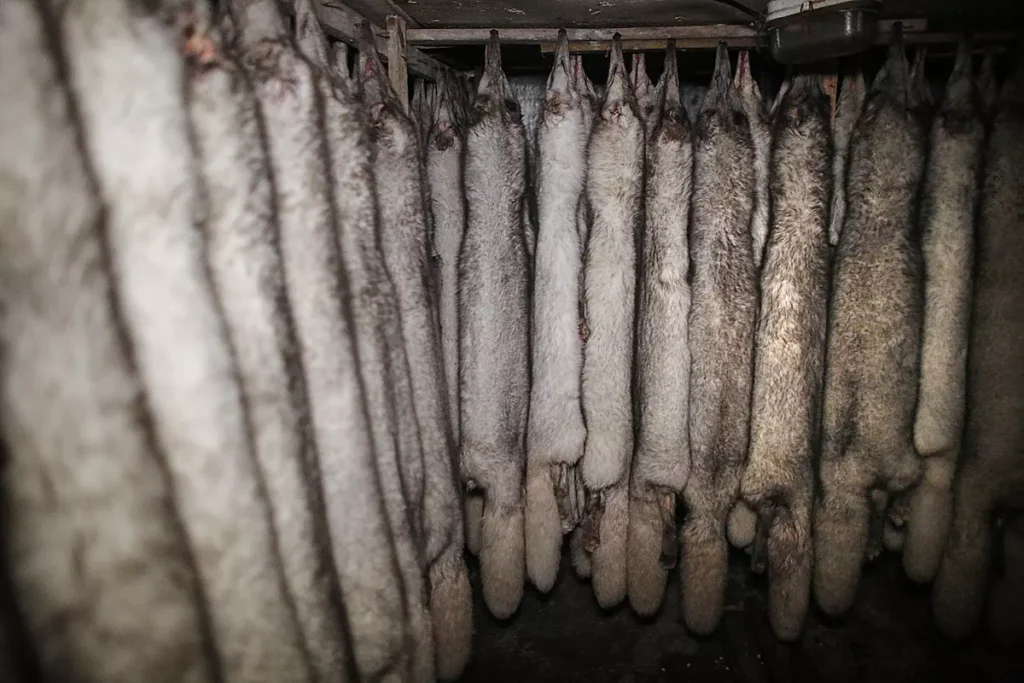There’s no big idea in any ascendant social movement that doesn’t cause some angst or even some disruption or dislocation. If the idea had been easy or empty of impact, somebody would have checked that box long ago.
Corey Johnson, the speaker of the New York City Council, has it right in boldly calling on the 51-member policy-making body to ban the sale of fur in the city – seeking to make our coats and other outer-wear garments more benign in terms of the impact on animals. As expected, there are howls of protest. Fur lovers are agitated, fearing the implication that they are morally careless or cruel. And fur sellers are feeling aggrieved, understanding that their businesses may be upended, or, if they cannot adapt, even dissolved.
The balance of power has been with the fur traders for centuries, and only now, after decades of active protest and innovation in the textile industry, is the fur trade vulnerable to a political offensive like Johnson’s effort. It’s a long and rich legacy that’s under examination. Even a part of Queens bears the surname of John Jacob Astor of American Fur Company fame.
The geographic span and economic impact of the fur trade has been breathtaking. Fur helped pioneers survive the cold, as they plied the West. The revenues from it put food on the table – for the mountain men who set the traplines to the merchants and the middlemen who processed the fur to the retailers who popularized the hats and coats that appealed to the masses. Before there were oil and coal barons in the Gilded Age, there were fur traders before and after the formation of the nation.
But history is a chronicle of the past, not a prescription for future action.
The unwritten history of the fur trade comes in the individual and collective pain and misery and death of beavers, wolves, bobcats, and other creatures both blessed and cursed with beautiful and warm coats. New generations of historians revise and re-write the past, and the destruction of animals is part of that revisionism, just as the narratives related to the killing of Native Americans, the history of slavery, and other ugly features of American history are made more vivid and central over time.
Today, in a world increasingly alert to the pain of animals, there’s a backstory to fur, and any morally conscious person cannot deny it. There’s a story before any fur gets to retail racks or coat closets; trappers set steel-jawed leghold devices in the forests and streams, and an unsuspecting animal trips the device and gets caught in its vise-like grip. The victim cannot tell the story, but we’re cognizant enough of animal intelligence and emotion these days to know, in general terms, what happens.
In recent decades, the tool-box of the furrier has become even more diabolical. Nowadays, wild animals are reared in confinement on fur “farms.” “Ranchers” rear mink or foxes or chinchillas and keep them in the cages until they are ready for pelting. When the time is right, they break their necks, suffocate them with hot carbon monoxide gas, or electrocute them. It might take 15 bobcats to make a single coat, or as many as 40 mink for a full-length garment.
Pain is pain. That’s one narrative that’s been one indisputable feature of the fur trade from its earliest incarnation.
In “Capitalism, Socialism and Democracy,” the economist Joseph Schumpeter described capitalism as “a perennial gale of creative destruction” – the process by which entrepreneurs and innovators introduce new goals, new means of production, and new products in support of their visions. The old businesses, as I wrote in “The Humane Economy,” often make apocalyptic predictions about the new approaches. But changes in business attitudes and practices, as Schumpeter noted, drive growth and are the lifeblood of the economy: businesses that do not adapt are left behind, while innovators claims a larger share of the market.
The humane economy is not some abstraction or far-off concept. It’s right here. The choices rest with us. With business leaders. With politicians. And our response to these opportunities either reinforces the old economic order or allow us to embrace change that ushers in a new era and an expanded sphere of justice.
When we can produce faux fur that is indistinguishable from real fur, why would we traps wild animals or raise them on fur farms? The designer and the seller simply work with a different product, and in the end, the consumer is not asked to make a sacrifice or experience a hardship – only to go to a different rack in the store and buy a functionally equivalent product not woven with moral problems. The faux fur maker buys fabric and provides jobs for manufacturing, and the retailer still sells the product to generate profits and employ sales staff. There are just no animals killed by cruel means. It’s an example of creative destruction – but with the creativity triumphing and the destruction nowhere to be seen.
The time will come when all the factory farms, fur ranches, and other places of systematic cruelty are gone, except for the few that may survive here and there as museums or memorials to preserve the evidence of what life was like when otherwise good people treated animals in ghastly ways.
The New York City Council members have more than a vote. They have an opportunity to make history. When it comes to their work on animal issues, it will be one of the most consequential decisions they can make.
New York City residents should contact the New York City Council and urge them to pass the Intro 1476 bill that would ban fur sales. They can be reached by twitter at @NYCCouncil or by looking up their council member’s email at: https://council.nyc.gov/districts
Photo credit: Fox pelts-Andrew Skowron/We Animals Media
